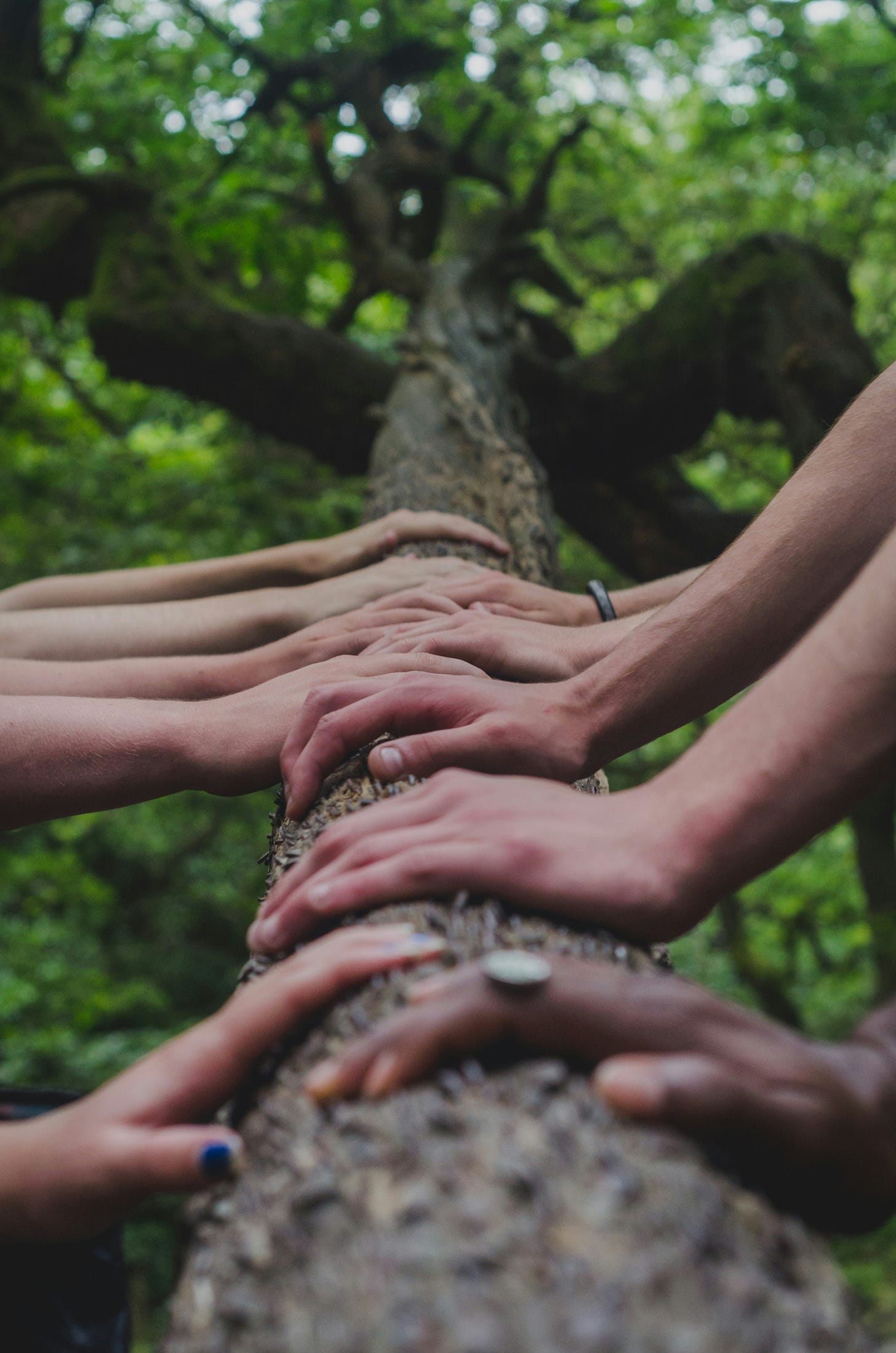Vital Village Groups
Growing Resilient Communities, Together
Yesterday morning, I swam twice the distance I usually swim. Not because I set my mind to it, not because I was determined, not because I am strong… but simply because I swam with others.
For years, I’ve been swimming at my local beach, occasionally managing a kilometre, usually much less. Recently, I stumbled across a local swim group, the Warnbro Sound Warriors, and decided to join them for a session. To my surprise, I swam 1.3km with ease—something that would have felt much harder alone.
There’s something about moving alongside others, or even behind them, that makes challenges feel more possible. A 2012 study on ‘Social Support and the Perception of Geographical Slant’ found that people standing at the base of a steep hill perceived it as less steep when they were with a friend. The closer their relationship, the easier the climb appeared.
The short story? Things feel easier when we’re with others. Challenges seem more possible, distances feel shorter, and resilience grows in community.
Why Connected Communities Matter
Photo by Shane Rounce on Unsplash
Enter 1 (VVGs)—a simple but powerful initiative we are developing in Perth’s northern corridor to grow more resilient, connected communities.
As climate change accelerates, disasters like bushfires and heatwaves are becoming more frequent. Many emergency professionals we’ve spoken with share the same concerns:
People don’t realise they live in at-risk areas.
People lack strong community support networks to rely on when crises hit.
People assume government and emergency services will take care of them.
The reality is that emergency services are stretched beyond capacity. When a disaster strikes, the communities that bounce back fastest aren’t necessarily the ones with the best infrastructure—but the ones with the strongest social ties.
In her article on How to Save a Community, Leah Lamb describes how community connections became lifelines during California wildfires. Neighbours who previously barely knew each other suddenly coordinated evacuation plans, shared critical updates, and supported one another practically and emotionally. She writes, “There are so many ways we can be part of and play a role in these moments.”
And yet, many people today feel too busy, too private, or too hesitant to reach out to their neighbours. Some feel they have nothing in common, some prefer to keep to themselves, and others are already overwhelmed with work and family responsibilities.
So how do we grow resilience in communities where people are disconnected, stretched, and unsure how to start?
A Different Approach: Following the Energy
At Befriend2, we believe in following the energy—starting where connection already exists and growing from there. Instead of trying to convince people to sign up for something new, we support them to build on what they’re already doing and care about.
This isn’t about setting up another ‘volunteer group.’ It’s about helping people tap into their natural gifts and strengths—the things they already love doing—and encouraging them to share those gifts in ways that feel good and sustainable.
What Does a Vital Village Group Look Like?
Years ago, I attended a Millionth Circle seeding workshop inspired by Jean Shinoda Bolen’s book. Within half a day, five or six new women’s groups were launched in our rural community—many of them among existing circles of friends and acquaintances.
The workshop provided simple guidelines and adaptable suggestions, with room to shape the model to suit each group. The group I joined lasted ten years, and I stayed involved for seven of them, gaining invaluable support through some of life’s most difficult seasons.
Like these women’s groups, Vital Village Groups aren’t one-size-fits-all. They are:
Flexible and adaptable—meeting at a frequency and format that works for each group.
Nested inside existing communities—daycare centres, sports clubs, neighbourhoods, schools, friend groups, workplaces and more.
Grounded in shared gifts—helping people discover and share what they love doing.
A safe, welcoming space—where people show up as they are, without pressure to contribute in a certain way.
Vital Village Groups help people transform existing connections into lasting support.
Some groups may focus on emergency preparedness, while others may centre around mutual care and connection, offering support through life's everyday ups and downs. Each group will be different, shaped by the people involved.
How We Can Support You
Through one-on-one support, seeding workshops and an optional community of practice, we’d love to help you:
Start a Vital Village Group in a setting that feels natural and familiar.
Learn simple group structures and flexible guidelines to help your group thrive.
Explore what community resilience means and how to strengthen it in everyday life.
Maybe you already belong to a mothers’ group, a faith group, a club, or a workplace team. Perhaps you’d like to bring together neighbours on your street. Whatever the context, we’d love to help you grow a stronger, more connected community—in a way that works for you.
A Vital Village Group isn’t another responsibility on your plate—it’s a support system. A place to belong, to connect, and to be part of something bigger.
Because, as I discovered swimming alongside others—everything feels more possible when we’re in it together.
Would you like to start a conversation about setting up a Vital Village Group in your community?
📩 Get in touch with me or Iain to explore possibilities:
🔹 Iain Shields – Wanneroo Neighbourhood Connector | 📧 iain@befriend.org.au | 📞 0400 548 430 - to start an in-person Vital Village Group in your local community.
🔹 Nicola-Jane le Breton – Thinking Partner | 📧 nicola@befriend.org.au | 📞 0421 633 124 - to join an online Community of Practice for those starting Vital Village groups.
Let’s grow something meaningful together. 🌱
Vital Village Groups is an initiative of the Resilient Together Wanneroo project, delivered by Befriend Inc and funded by the National Disaster Risk Reduction (NDRR) program through the Department of Fire & Emergency Services WA (DFES) for residents in Perth’s northern corridor in Western Australia.


